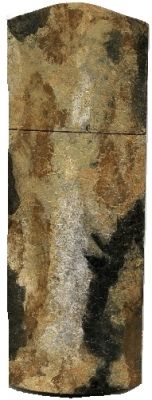Question
I recently posted some photos of wicked fisheye on red oak tables. The problem has much improved, but we're not up to quality standards yet. I'm debating whether to use Smoothie II or unwaxed shellac. It turns out the bottle says to use Smoothie II for catalyzing finishes (I'm using catalyzing sealer and conversion varnish, both from Sherwin Williams). I'm concerned about the effect on catalyzation and contamination of my equipment with silicone. Unwaxed shellac makes me concerned about adhesion with the conversion varnish topcoat. Can anyone address these issues? I don't want to see these tables ever again after they leave our shop.
Forum Responses
(Finishing Forum)
From contributor G:
Opinions are divided on shellac under CV. Some say it's okay, as long as your first applications of CV are light. Here are a couple of comments from others...
"What you want to avoid is getting too much wet product on the shellac. I find spraying a light first coat with a little heavier second coat works well. Scuff first."
"I would not use shellac under conversion varnish; I'd only use a catalyzed vinyl sealer or clear conversion varnish. Otherwise, wrinkling of the finish would be a real concern."
They add the Smoothie for you, hence no fisheye.
The manufacturer's warranty is bogus anyway. They will pay for more product, no labor. If things go bad, who cares about the cost of a few gallons of product? When the shingles fail on my roof, the least of my concern will be the expense of buying new shingles.
I don't know which manufacturer you buy your coatings from, but many years ago Sherwin Williams paid our company a substantial amount of money to strip and refinish a huge job that went bad as a result of their mistake. They didn't just pay for the replacement of the coating. If we had used other products they wouldn't have done anything.
I do many things as a finisher that I am not supposed to do, but there is a risk involved every time and it is my responsibility to understand the risk and do everything to minimize the chance of failure. I am just saying using shellac under CV is an unacceptable risk in my opinion. If I needed a sealer to seal off the contamination I would use a 2k isolante, otherwise I would just use Smoothie.
Where can I get the 2K isolates (2k polyurethane?)? Anyone know about Smoothie I versus Smoothie II?
A little more research on Marston Smoothie will show you that Smoothie is a combination of solvent and Poly-Dimethylsiloxane (AKA silicone). Smoothie II has more complex chemistry but I don't think it contains silicone.
It's interesting that any time there are fisheyes we jump to the conclusion of silicone contamination, and if we add a silicone product to our finish we think everything is contaminated. Neither is always true.
Fisheye can be caused by little spots of oil or wax or almost anything that can be called a lubricant. This probably includes dandruff from the head of someone that uses a shampoo which includes a surfactant. Adding silicone to your finish puts it in a homogeneous solution. There are no little spots to cause fisheye.
So I would be suspicious of a lot of recommendations that seem to be based on superstition. In my opinion, you'll probably be okay with either dewaxed shellac or Smoothie II. That is provided your source of contamination is not something like dandruff.
Please forgive me for adding a bit of trivia. There is a common belief that overspray or contamination of WD40 causes fisheye because it contains silicone. WD40 will cause fisheye, but it contains no silicone. Its principal ingredient (believe it or not) is fish oil. Nuf said.
3 - Composition/Information on Ingredients
Ingredient
CAS #
Weight Percent
Aliphatic Hydrocarbon
From the MSDS for Smoothie:
Ingredient C.A.S. No. % by Wt
MEDIUM ALIPHATIC SOLVENT NAPHTHA 64742-88-7 40 - 70
POLY(DIMETHYLSILOXANE) 63148-62-9 30 - 60
From the MSDS for Smoothie II:
Ingredient C.A.S. No. % by Wt
XYLENE 1330-20-7 30 - 60
SOLVENT NAPHTHA (PETROLEUM), LIGHT ALIPHATIC 64742-89-8 15 - 40
ETHYLBENZENE 100-41-4 10 - 30
2-BUTOXYETHANOL 111-76-2 7 - 13
Interesting that they have gone to such a complicated formulation.
The only test I have not done is to spray a light particle coat where only a little of it forms droplets on the surface so that the whole board is not covered with it, and let it dry out before sealing. Maybe this is the problem, if any. I'll leave that test for you guys to do.
